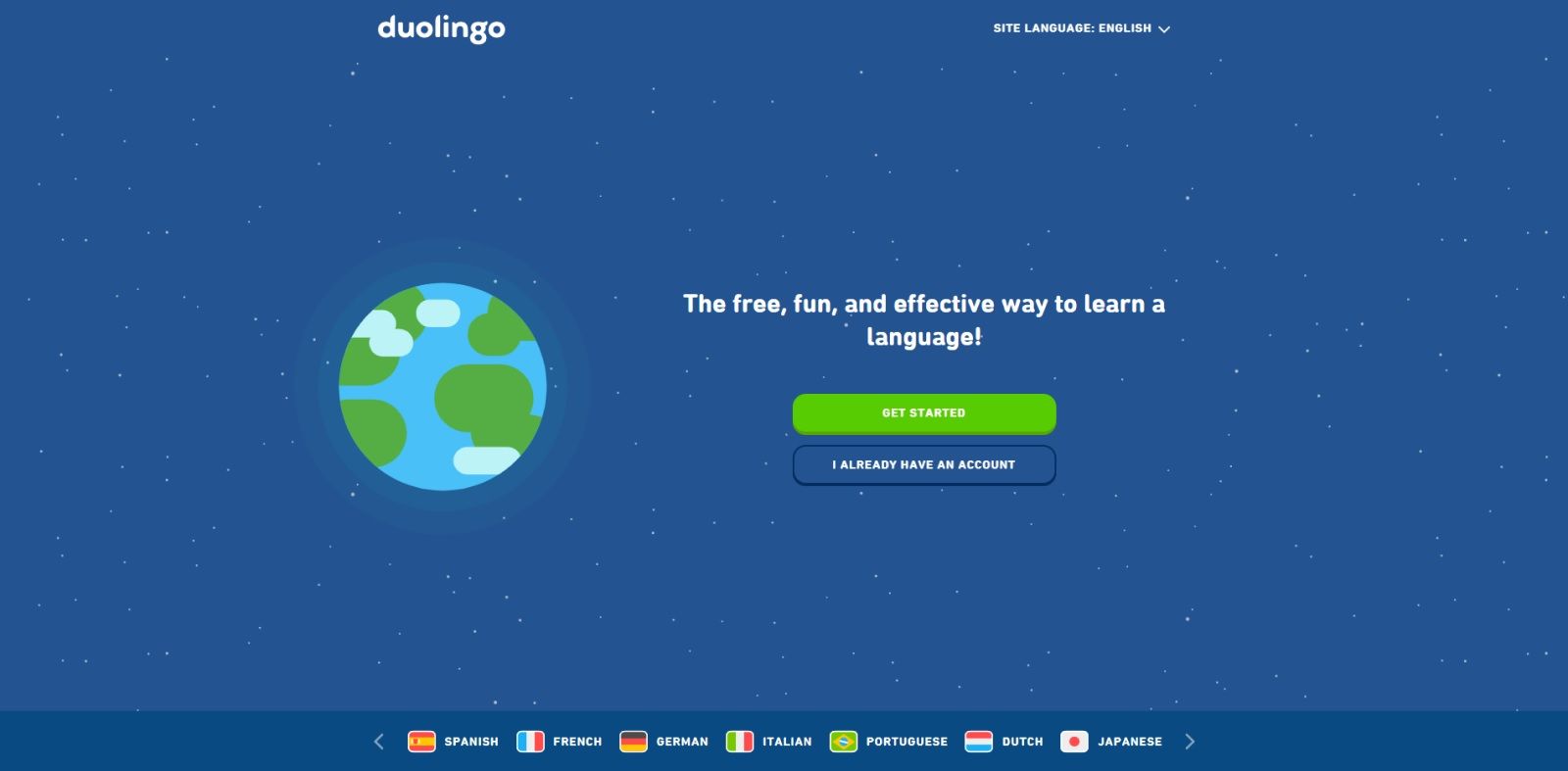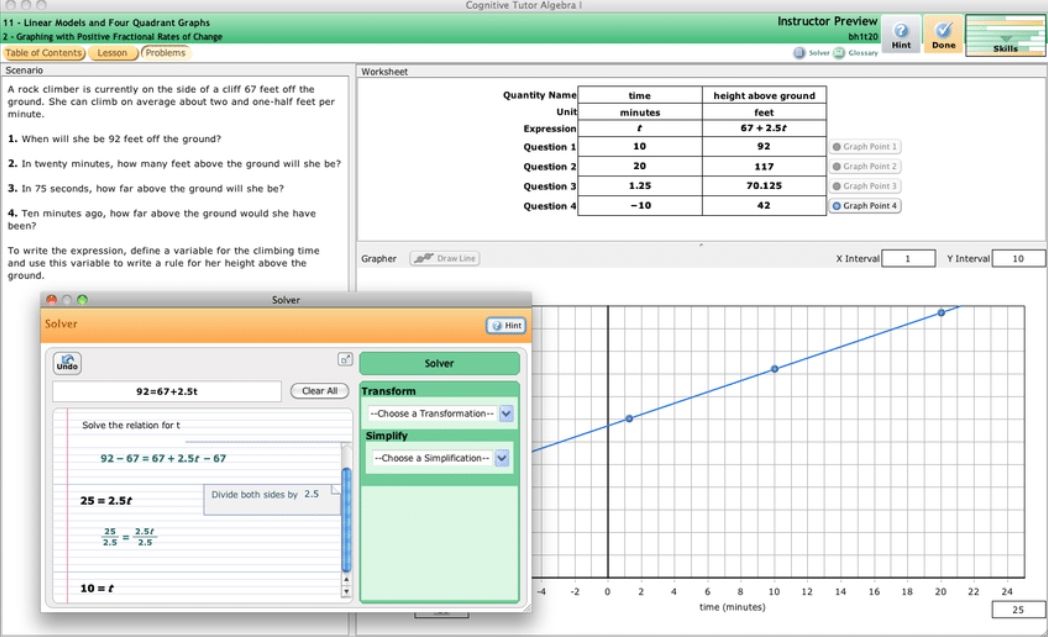
AI in education: top applications, real-life examples, and adoption tips
March 25, 2024
- Home
- Artificial intelligence
- AI in education

ML Engineer
Artificial intelligence in education is applied to improve learning outcomes and supports teachers in developing better educational practices. From automatic assignment grading to tailored curriculums, there are many ways AI solutions can be used in educational institutions.
AI has the potential to revolutionize education, transforming it from a system focused on memorizing facts into one that helps students unlock their full potential and learn necessary skills through more personalized learning. And as the technology develops, educators are increasingly turning to AI software development to deploy these tools in their classrooms and provide personalized learning experiences.
invested in AI in education in 2020 despite the coronavirus pandemic
CoE
global AI in education CAGR from 2022 to 2030
Grand View Research
8 applications of AI in education
AI-based educational technologies can unlock new opportunities for their students, faculty, and staff. Let’s explore the most common ways artificial intelligence is applied in education.
Learning process personalization
AI-based platforms can collect and analyze student data on interaction with educational materials, exercise completion time, test results, and overall performance to understand each student's attitudes and needs. Drawing on this data, generative AI tools can design personalized training pathways and adapt them in real-time to the learner’s progress.
For example, when an AI-powered system detects that a student learning the English language is having difficulties, it can generate personalized listening, speaking, reading, or writing exercises and provide immediate feedback upon their completion. Such a system can also present content in various interactive formats to accommodate different learning styles and preferences.
Scheme title: Operating scheme of an intelligent adaptive teaching platform
Data source: deloitte.com—Global development of AI-based education
Learning outcomes prediction
ML-based education solutions are capable of processing previously collected data on students' academic performance, attitudes, and social conditions and categorizing them into different archetypes. Subsequently, the algorithms can compare and identify relationships between these categories of learners and their typical schooling outcomes.
This ability can be leveraged by professors to choose the best teaching methods and programs based on their students' skills and needs. But it's also an invaluable tool for educational institutions, which can leverage predictive analytics software to identify in advance students at risk of dropping out of college or not graduating on time due to poor grades, absenteeism, or tardiness and support them before it's too late.
Automation of mundane teacher tasks
Artificial intelligence can help teachers perform the most tedious and time-consuming tasks, such as test evaluation with proper grading software, saving time for interacting with students. Such tools are already perfectly capable of correcting multiple-choice and true-false exercises, but thanks to the current proliferation of large language models for natural language processing, they will be more and more efficient in checking short-written answers and essays and assessing writing skills.
Scheme title: Potential reallocation of working hours via automation technologies
Note: average for respondents in Canada, Singapore, United Kingdom, and United States
Data source: McKinsey & Company — How artificial intelligence will impact K-12 teachers
Administrative workflows
Educational institutions can use AI to automate many administrative activities, including the processing of student applications, enrollment, facility management, HR procedures, recruiting, and many more. Indeed, powering administrative tasks and customer service with AI may be the decisive factor in cutting costs, enhancing management efficiency, and improving responsiveness to students' needs.
That's why the Department for Education of the United Kingdom decided to adopt a system that can autonomously process digital correspondence and, therefore, speed up its follow-up rate to incoming emails. This solution was developed in collaboration with Capgemini and involves robotic process automation technology enhanced by AI.
Assistance for special needs students
It's not a secret that students with special needs require extra attention and resources. AI-powered assistants can provide them with tailored learning paths and exercises to ensure they get the best possible education. For example, AI-enabled text-to-speech software can read out loud instructional content and provide students with visual impairments an equal opportunity to learn.
Resource planning
In addition to enhancing learning outcomes, AI can also streamline managing school infrastructure. For example, AI can perform such time-consuming and error-prone resource planning tasks of like calculating the right amount of food, learning materials or stationery and ensuring it’s timely purchased and delivered. Especially with many uncertainties caused by the pandemic, being able to quickly adapt to new conditions has never been more important for schools.
Curriculum design
Creating a curriculum is a notoriously difficult task, as the knowledge base and its relevance is constantly changing. While AI is excellent at providing personalized lesson plans for individual students, it can also provide immense value in changing school or even national-level curriculums for the better.
AI can process enormous amounts of data about students’ progress, interests, competencies, and challenges in a given year and advise curriculum designers how to improve the effectiveness of their teaching programs on a large scale. AI algorithms can identify patterns and trends, assess the effectiveness of certain pedagogical approaches, and predict the outcomes of different educational strategies.
Ongoing assistance during learning
The combination of ML-driven adaptive learning and natural language processing makes virtual assistants extremely flexible and, consequently, a valuable ally for learners. Chatbots and generative artificial intelligence tools operate 24/7, providing students with feedback and support whenever a question arises and helping students keep up with their studies. Virtual assistants also and can’t judge students, helping them experiment and be less anxious about making mistakes, which many students tend to be in the classroom in front of their teachers and classmates.
Ready to revolutionize education with AI?
Benefits of AI in education
For students
Better learning experience
By creating a personalized learning experience for each student and tailoring materials to their specific skill set and needs, AI gives students a greater degree of control over their educational experience.
Improved self-educational skills
In this new day and age, critical thinking, problem-solving, and creativity are playing an increasingly important role in our careers. By providing students with instant feedback on their work, AI allows them to identify patterns quickly and come up with creative solutions.
For educators
More efficient schools
By automating routine tasks and providing targeted recommendations, AI can free up time for educators to focus on strategic decision-making and engaging with students.
Better engagement
It’s common knowledge that students learn better when they are interested in the subject. With AI-generated insights on students’ interests and learning goals, teachers can make students feel more valued and supported and take targeted actions to improve their commitment to the studied subjects.
For parents
Easier monitoring of child’s progress
Students whose parents take an active part in their higher education are more likely to attend college regularly, take advanced classes, and excel academically. AI-based learning outcomes prediction tools help parents participate more actively in their child’s education by providing frequent insights into the student’s progress and allowing them to timely intervene if their child is falling behind.
For school management
Easier decision-making
With AI-driven insights, the decision-makers get access to data-backed analyses of student performance, enrollment trends, and curricular opportunities and can make better decisions faster.
Optimized resource allocation
Streamlining a gamut of school management and administrative tasks, AI makes educational institutions more efficient.
Reduced staff turnover
By applying AI to automate a huge load of time-consuming administrative tasks, educators can focus on more engaging activities and become more likely to continue teaching.
Types of AI technologies in education
AI in education
Learner-supporting AI
- Adaptive learning tools
- Tools that measure attention, empathy, and emotion
- Virtual assistant chatbots
- Tools for automatic writing evaluation
- Personalized learning platforms
- Intelligent language learning apps
- Personalized content curation platforms
Teacher-supporting AI
- Web-scraping tools
- Intelligent scheduling and course planning
- Solutions or automatic assignment grading
- Classroom management tools
- Curriculum design tools
- Student progress analytics platforms
Institution-supporting AI
- Admission management platforms
- Emotional support chatbots
- Resource planning systems
- Dropout prediction tools
- Enrollment management and forecasting tools
- Campus safety and security tools
Emerging technologies in education to pair with AI
Technology/Description
Technology
Value for education
Description
Value for education
Virtual reality
Virtual reality
VR provides a computer-generated 3D simulation of reality.
VR can be used to enhance student learning in both medical and technical fields by providing immersive, interactive experiences that simulate real-world scenarios. For example, students can learn about anatomy and physiology by exploring and interacting with 3D models of organs, bones, and other parts of the human body in a fun and engaging way.
Augmented reality
Augmented reality
AR overlays digital information onto a physical environment.
AR technology can be applied to enhance the educational experience by superimposing digital information onto physical objects. This allows students to learn more about the studied subject while they experiment in the real world.
IoT
IoT
IoT is a network of physical devices embedded with electronics, sensors, software, and connectivity capabilities that collect and exchange data.
IoT devices allow teachers and administrators to get real-time data from classrooms, ranging from lighting and temperature levels to desk use, student attendance, and more. Drawing on this data, they can better understand how students learn in the classroom.
Real-life examples of AI in education
Duolingo
Duolingo’s language-learning application is a great example of an AI-based learning platform integrating a smart bot to interact with students. Its famous tutor/mascot is a cheerful but insistent green owl that motivates users to do daily exercises. Duolingo's personalized learning approach includes an initial positioning test to scan the user's skills and a progressive readjustment of the proposed activities' difficulty based on previous performance and results achieved. The ultimate goal is to maintain an optimal level of challenge and keep learners engaged, also thanks to a points-based reward system.

Image title: Duolingo main pageData source: duolingo.com
Khanmigo
Khanmigo by Khan Academy is an AI tutor and teaching assistant powered by GPT-4 and Khan Academy's world-class content library with capabilities for teachers, students, and parents. After piloting it in selected US schools and school districts, Khan Academy has recently made Khanmigo available to the public. Operating as an always-available chatbot in a user’s Khan Academy interface, Khanmigo provides students with personalized assistance in subjects like math, reading, writing, or computer science, coaching them and helping them prepare for tests. Teachers can also use Khanmigo to create effective lesson plans and tasks for students based on student assessments. Finally, Khanmigo not only provides parents with standard parent control features like monitoring chat activities but can also explain the subjects their child is studying so that they can assist them with schoolwork.
Nuance
Revolutionizing the way students and faculty learn, Nuance's speech recognition software called Dragon Speech Recognition transcribes up to 160 words per minute with effortless accuracy. Nuance allows teachers to cut the time it takes to create lesson plans and syllabi and helps students to improve their spelling and word recognition. This innovative technology is especially beneficial for users with accessibility requirements, as it allows them to navigate documents by voice.
StepWise
StepWise is an AI-powered educational platform developed by US-based Querium with the mission of revolutionizing how students learn STEM subjects. The platform employs AI-based analytics to accurately assess the student’s progress in a given subject and provides personalized instructions based on the student’s individual learning needs. The platform also uses machine learning algorithms to uncover difficult concepts and help the student better understand them. StepWise provides a comprehensive set of tools, such as interactive lessons, adaptive quizzes, and real-time feedback, to ensure that the student stays engaged throughout their learning session.
Carnegie Learning
Carnegie Learning is an AI-based educational software developer that provides curriculum and assessment materials to K-12 schools. The company's flagship product, Cognitive Tutor, uses artificial intelligence technology to adapt its teaching approach to the student's individual performance. By leveraging adaptive learning techniques, students receive personalized instructions that help them better understand the material. The dynamic feedback loop provided by the software also allows teachers to track student progress and make informed decisions about lesson plans.

Image title: Screenshot from Cognitive Tutor Algebra curriculumData source: researchgate.net
Our AI services for the education domain
If you are looking for a reliable development partner on your journey to transform education, Itransition offers a full range of AI services.

Our certified AI consultants provide advisory support at every step of the AI implementation or optimization process:
- AI use case identification
- Data mapping and data quality assessment
- Current technological environment audit
- Initial project setup advisory
- Development process review
- AI solution architecture design
- Tech stack selection
- MVP conceptualization
- Project budgeting and ROI analysis
- Risk management strategy creation
- User training and support
We help build innovative AI-driven solutions by covering all aspects of the development project:
- ETL/ELT pipeline setup
- Data cleansing, annotation, transformation
- Quality assurance activities
- Deployment to the production environment
- Post-launch support, updates and modernization
- Software integrations
- Data visualization setup
- AI algorithm selection
- AI model training
Education is ripe for AI-based transformation
AI in education: implementation strategy
Successful AI implementation in the education market requires careful consideration and strategic planning.
1
Assessment
1
Assessment
First, it is important to understand the core elements of AI-based approaches and how they can be used in educational settings. This includes examining the use cases and applications of ML, NLP, and deep learning. Next, it is important to assess the current state of AI-based solutions in educational contexts. This includes looking at the availability of products and services that can be incorporated into an AI-based approach, as well as the level of sophistication that more forward-looking schools and universities achieved using these technologies. Additionally, it is important to understand the legal and ethical implications of implementing AI-based systems in educational settings.
2
Planning
2
Planning
The next step is to develop a comprehensive plan for implementing AI-based solutions in your educational institution. This includes defining specific objectives, setting appropriate metrics and targets, and coming up with the project’s timeline. Additionally, you need to identify the necessary skills, resources, and technologies required to build an AI-based system. You can also research the most suitable vendors or organizations that provide these services, as well as create a development budget.
3
Monitoring
3
Monitoring
Finally, it is essential to establish a governance structure for AI-based solutions in educational settings, which involves creating a set of guidelines and protocols to ensure that the AI-based system is compliant with all applicable laws and regulations. Additionally, it requires creating a process for monitoring the use of AI-based solutions in the education sector and ensuring that data privacy is maintained throughout the implementation process.
AI in education challenges and their potential solutions
Challenge
Solution
Data privacy concerns
AI applications require large datasets to operate effectively, which may jeopardize the security and privacy of student information.
AI applications require large datasets to operate effectively, which may jeopardize the security and privacy of student information.
Education institutions should have clear policies and procedures in place to protect student data privacy, such as user authentication, limited access to sensitive information, and encryption of stored data.
Cost of implementation
Implementing AI-powered solutions can be expensive for schools due to the cost of hardware and software required, as well as the cost of teaching the staff how to use new technologies.
Implementing AI-powered solutions can be expensive for schools due to the cost of hardware and software required, as well as the cost of teaching the staff how to use new technologies.
The most effective way educational institutions can cut AI costs is by opting for out-of-the-box SaaS solutions instead of building AI solutions from scratch. Schools can also work with vendors that provide educational discounts to make AI implementation more affordable.
Lack of technical expertise
Educators often lack AI literacy and the necessary technical skills to effectively utilize AI in their classrooms.
Educators often lack AI literacy and the necessary technical skills to effectively utilize AI in their classrooms.
To address this challenge, institutions should invest in training for teachers and staff on the use of AI technology and create support systems to help them integrate it into their teaching methods.
Generative AI abuse
Students can use OpenAI’s ChatGPT and similar tools for cheating and plagiarizing essays and other assignments, as well as spreading misinformation by creating fake news and reports.
Students can use OpenAI’s ChatGPT and similar tools for cheating and plagiarizing essays and other assignments, as well as spreading misinformation by creating fake news and reports.
Education policymakers need to establish guidelines regarding responsible generative AI use and provide teachers with effective tools for content filtering and plagiarism detection. Additionally, educators need to spread awareness about the consequences of generative AI tools’ unfair use and emphasize the importance of integrity and ethical behavior.
Limited tools for measuring impact
Measuring the effectiveness of AI-powered solutions can be difficult due to the lack of suitable frameworks or standards.
Measuring the effectiveness of AI-powered solutions can be difficult due to the lack of suitable frameworks or standards.
You first need to understand precisely what problems does your AI aims to solve and then develop custom metrics for each problem to measure the solution’s impact on student performance and outcomes.

Revolutionize education with AI
One of the most promising EdTech trends, AI has the potential to revolutionize how we learn and teach. Education leaders should promote the adoption of AI-powered systems across schools, colleges, and universities to gain insights into student behavior and preferences; personalizing learning experiences to meet each student's needs better; automate some of the more mundane tasks associated with teaching, and improve outcomes by providing students with tailored feedback. Furthermore, AI-powered systems can reduce operational costs by automating and streamlining operations, making the education process more efficient. If you are looking for a reliable AI service provider on your journey to transform education, don’t hesitate to contact Itransition’s experts.

FAQ
How is AI changing education?
AI is transforming the way education is delivered, helping create personalized learning experiences and automating assessment. AI systems can be used to generate tailored content for individual students, identify gaps in their knowledge, and monitor student progress across courses.
Is AI the future of education
AI has the potential to revolutionize the way educational institutions develop and deliver content, assess student performance, measure outcomes, and make decisions. Overall, AI-enabled technologies can help the education system improve learning standards by enabling more effective teaching methods and better allocation of resources.

Service
Artificial intelligence services & solutions
Itransition offers full-cycle artificial intelligence services to help companies build and scale powerful AI solutions tailored to their business needs.

Insights
AI in the automotive industry: use cases, success stories & adoption guidelines
Explore key use cases, payoffs, and real-life examples of AI in the automotive industry, along with common adoption challenges and tips to address them.

Insights
Machine learning for stock market prediction: applications & technical overview
Explore the role of machine learning in stock market prediction, including use cases, implementation examples and guidelines, platforms, and the best algorithms.
More about AI services
Services